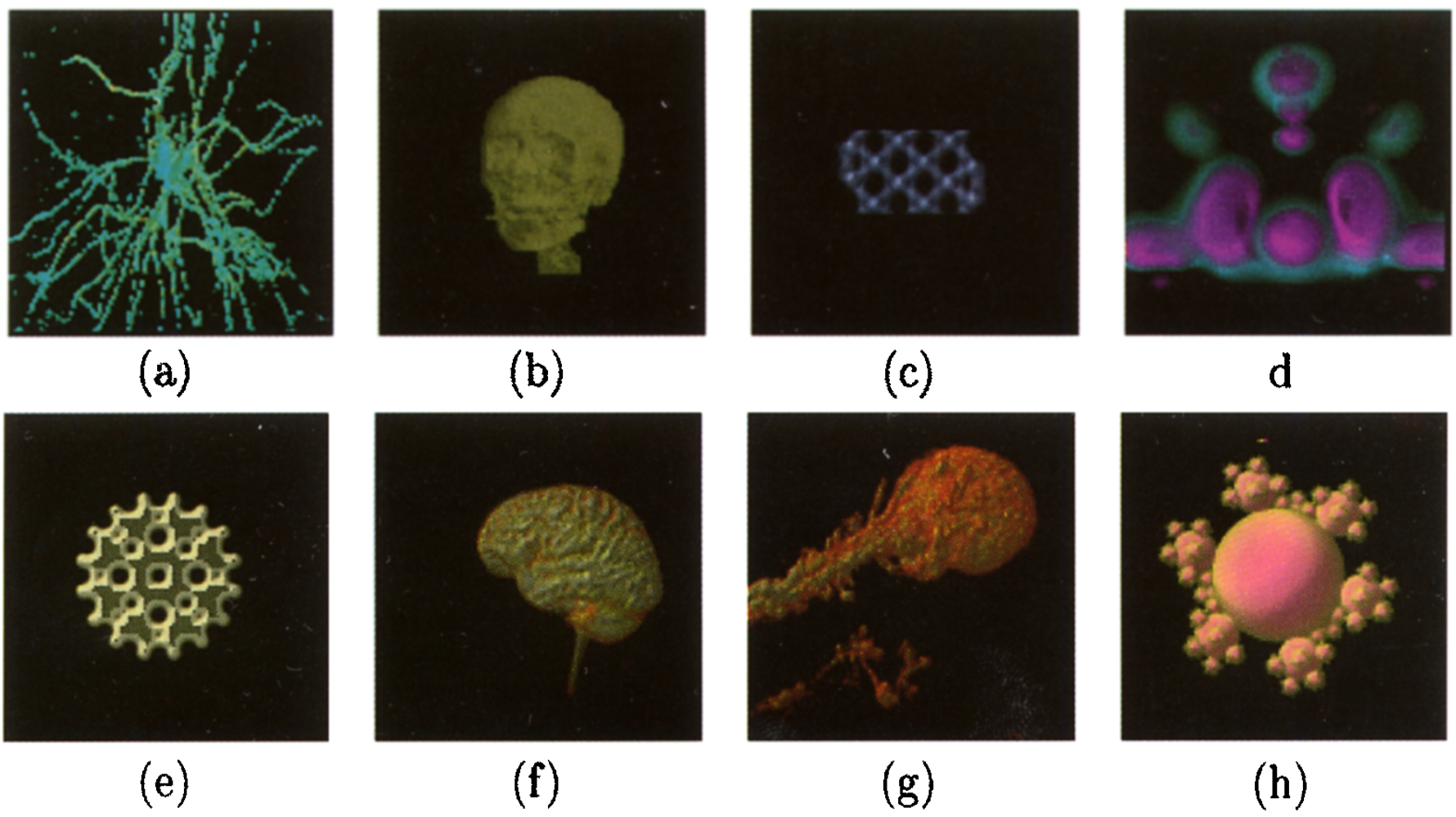
Implementations of the Cube-4 on the Teramac Custom Computing Machine
Computers & Graphics, 1997.
We present two implementations of the Cube-4 volume rendering architecture, developed at SUNY Stony Brook, on the Teramac custom computing machine. Cube-4 uses a slice-parallel ray-casting algorithm that allows for a parallel and pipelined implementation of ray-casting. Trilinear interpolation, surface normal estimation from interpolated samples, shading, classification, and compositing are part of the rendering pipeline. Using the partitioning schemes introduced in this paper, Cube-4 is capable of rendering in real-time large datasets (e.g., 10243) with a limited number of rendering pipelines. Teramac is a hardware simulator developed at Hewlett-Packard Research Laboratories. Teramac belongs to the new class of custom computing machines, which combine the speed of special-purpose hardware with the flexibility of general-purpose computers. Using Teramac as a development tool, we implemented two working Cube-4 prototypes capable of rendering 128^3 datasets in 0.65 s at a very low 0.96 MHz processing frequency. The results from these implementations indicate scalable performance with the number of rendering pipelines and real-time frame-rates for high-resolution datasets.